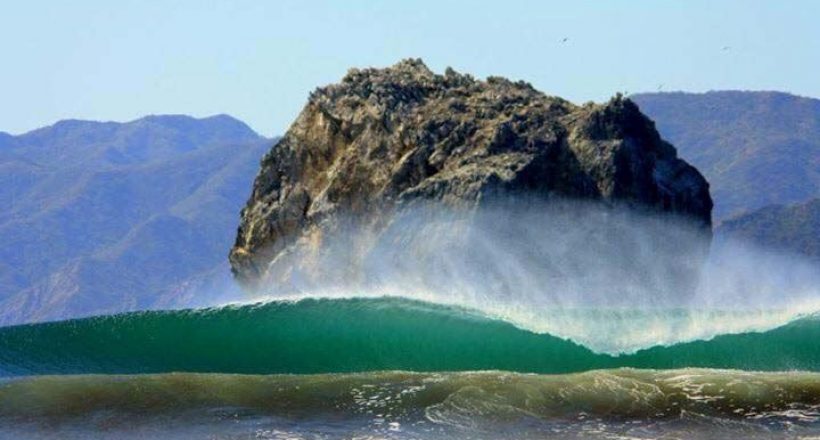
Surf Science – Why Do Waves Break?
- JUN 05, 2017Warning: count(): Parameter must be an array or an object that implements Countable in /home/howlermag/public_html/old/wp-content/themes/new-paper/includes/general.php on line 193

Your Lead Paragrpah goes here
[vc_row full_width=”full_width”][vc_column][vc_column_text]
If there is a heaven I know where it be. Under the folds of the “hills that roll through the sea.“
This profound quote originated in the mind of arguably the most stylish surfer of our times, Craig Anderson. The quote alludes to finding heaven within the breaking waves in the ocean (I would guess the tube). Whether you prefer a traditional surfboard, a boogie board, an SUP, or just body surfing, any wave rider can identify with the few seconds of euphoria felt from racing down the face of a breaking wave. This cerebral topic was covered in the April-May issue article, The Science of Stoke. But for this month, let’s focus on a topic with its roots in oceanography physics. Let’s explore: why do waves break?
[/vc_column_text][/vc_column][/vc_row][vc_row full_width=”full_width”][vc_column width=”1/2″][vc_column_text]
How do these aquatic energy vessels travel thousands of miles for days on end to finally come crashing down for our enjoyment? In order to thoroughly understand this topic, I would recommend refreshing yourself on 2 previous Surf Science articles: How Waves are Created, and The Importance of Swell Period.
A quick refresher. Waves are created from strong winds blowing atop the ocean in all corners of our planet. As the waves are generated and grown (like a snowball) on the surface of the ocean, there is also a substantial amount of corresponding energy traveling below each wave. In fact, open ocean swells with 20 second periods (from crest to crest) have 1,053 feet of downward energy and move at 35 mph through open ocean when traveling in sets, and 69 mph when traveling as individual waves.
[/vc_column_text][/vc_column][vc_column width=”1/2″][vc_gallery type=”image_grid” images=”2846″ img_size=”full”][/vc_column][/vc_row][vc_row full_width=”full_width”][vc_column][vc_column_text]
As each swell line begins to reach shallow water, friction is created between the wave’s downward energy and the sea-floor, causing the wave to slow down. As the sea-floor rises even more with closer proximity to the shoreline, the underwater energy is pushed vertically and the wave grows in visible height above the surface. Longer-period waves with more downward energy will grow much more than short-period waves when they begin to shoal. A three-foot wave with 20 seconds will triple its size when breaking while a three-foot wave at 10 seconds will remain about the same size. At a critical point in the surf zone, the downward energy of the approaching wave is drastically slowed down by the friction of the rising sea floor while the visible upper part of the wave is still racing forward. And at some magical moment in mathematics, the swell will break for a few glorious seconds.. Who’s on it!?
[/vc_column_text][/vc_column][/vc_row][vc_row full_width=”full_width”][vc_column width=”1/2″][vc_column_text]
Let’s make a real-life analogy. Imagine this: you are sprinting along a flat straight-away as fast as you can. Suddenly, there’s a set of stairs that appear in front of you that you must navigate. Still trying to maintain the same velocity, you run into the stairs, your feet trip up, and you eventually face plant. This is precisely what ocean waves do as they approach the coastline.
And with each wave that breaks, surfers have some kind of jargon to describe it. Whether the wave is mushy, fat, hollow, steep, open, closed-out, peaky, etc., is a direct effect of what’s happening on the bottom. Generally speaking, a beach that gradually drops off into deeper water will have softer, easier waves while a beach with a rapid drop off to deep water will have powerful, hollow waves.
[/vc_column_text][/vc_column][vc_column width=”1/2″][vc_gallery type=”image_grid” images=”2846″ img_size=”full”][/vc_column][/vc_row]









